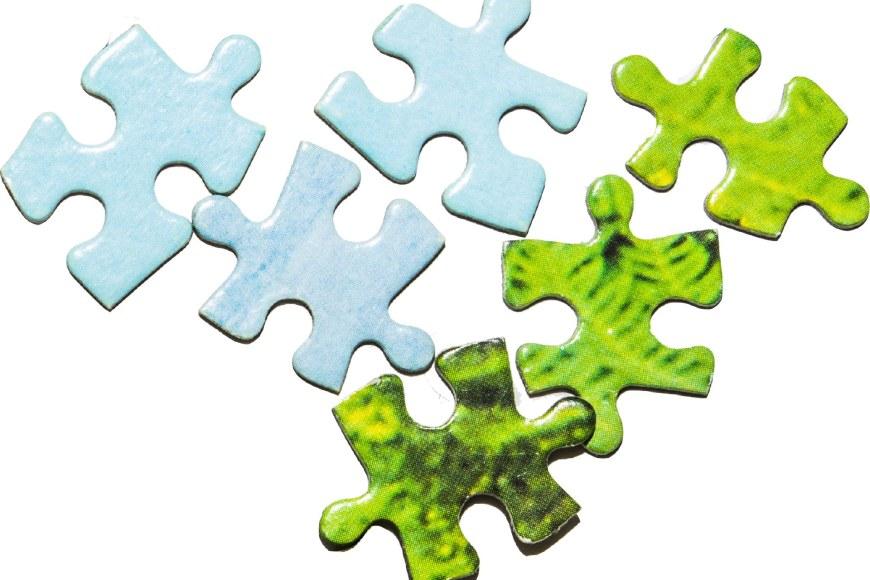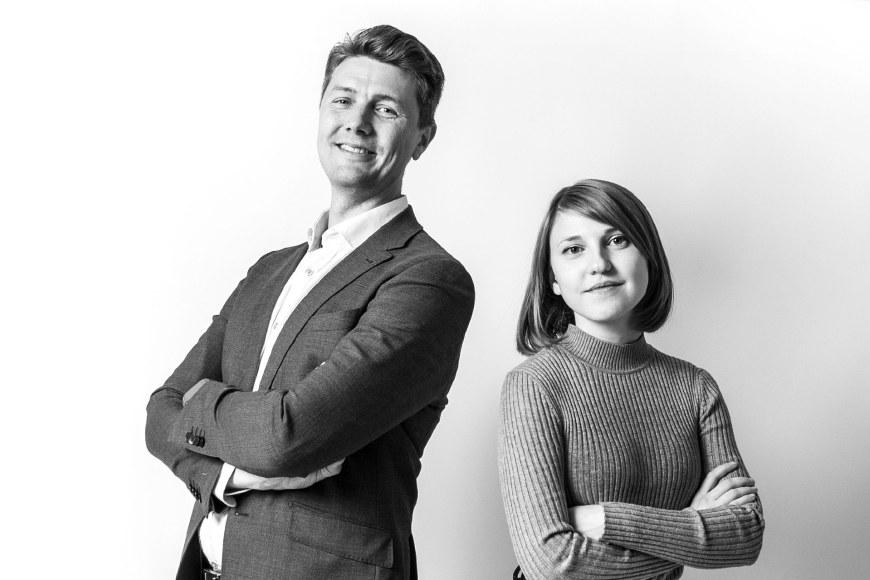Stop looking for a unicorn. AI could help find the right colleague

This article was originally published in Unit, the magazine of Tampere Universities.
Imagine a huge virtual open plan office with colleagues from all over the world working in your field. Whenever you need collegial advice or input, or want to start a new project, you have the most suitable colleague right across the room – all you have to do is call out.
Such a digital open plan office will likely not emerge in the near future. Even to dream of such a concept, researchers first need to investigate what kind of talent should be pooled.
According to Associate Professor Thomas Olsson from Tampere University, people should probably not be allowed to define the composition of the personnel in their office. We are quite biased and often end up favouring people we are already familiar with and find agreeable. For example, Peter might recommend Paul because he works on the same issues as Peter, supports the same football team and is a nice person. Peter and Paul are likely to enjoy their joint project, but would it result in the best possible outcome? Probably not.
“The best results are not created by similar partners, but when the partners complement each other in just the right way,” Olsson says.
Unfortunately, people are not very good at analysing others’ complementary qualities, especially when time is short and the project should already have started. Technology could turn out to be helpful here. Unlike Peter, artificial intelligence (AI) could browse Paul’s CV, latest scientific articles and Twitter posts in a matter of seconds. From these data, AI could determine whether Peter and Paul would be suitable teammates or whether it would be more fruitful to choose someone else instead.
“People could of course do it themselves, but it would take a huge amount of time and not many people have that,” says Doctoral Researcher Ekaterina Olshannikova.
Who to follow?
Olsson and Olshannikova are working in the Big Match project at Tampere University, which is developing digital tools to support the networking of experts. The aim is to analyse how people could be most ideally connected and determine what kind of technical platforms could be created to facilitate networking. The project combines research in data analytics, computer science, social psychology, and human-computer interaction.
Recently, the researchers analysed existing networks of scientific community members based on their Twitter behaviour and publication history.
“We were trying to discover how far apart the different experts are from a social network perspective, and what topics, for example, the followers of a particular organisation are talking about on Twitter,” says Olshannikova.
Special attention was paid to whom the experts mention in their tweets. Among other things, it gives an indication of the closeness of their interactive relationships. On this basis, it is possible to create new kinds of recommendations about who to follow.
“Twitter and other social media currently often provide the users with followee recommendations who are either celebrities or people with whom you have similar interests or some sort of weak tie. But if we really wanted to learn new things and get new ideas, we should communicate with people who are quite different from us,” Olsson says.

Like a gigantic puzzle
It is not simple to create such recommendations. So many things influence the dynamics between collaborators that it is difficult to show which factors are the most important.
"Human relationships are like a gigantic puzzle. Each piece is different, but they must all fit together," Olshannikova points out.
Traditionally, the formation of expert groups has utilised such metrics as the Big Five personality traits, which are derived from psychology. The Big Five has been shown to have the potential to create groups of people who get along well together, but whether such concord will generate the best possible innovations is another question entirely. Thus, the Big Match project focuses on other dimensions, such as various abilities and skills, and on matching interests and goals.
“There should not only be similarities, but also enough variation. That task is not easy,” Olshannikova says.
According to Olsson, the whole Big Match project is risky because it may not be possible to create validated templates for social matching in just one project, let alone working applications that would allow the scientific community to start using them to search for partners. Much conceptualisation and exploration still lies ahead.
However, the risk is worth taking, Olsson argues.
“If we succeed and are able to build effective collaborations and expert networks, the benefits can be enormous for individuals, organisations and society. Both productivity and job satisfaction could increase on a large scale. We have the opportunity to follow the university’s slogan of unleashing human potential,” he explains.
Do we trust algorithms?
So far, online communities like Stack Overflow come the closest to a virtual open plan office for experts. In these places, people can request help and learn from a global community of peers. Sometimes contacts lead to wider collaboration and even new career paths.
The Big Match project is currently analysing Stack Overflow’s conversations.
“We can look for different trends in the conversations and analyse whether the same things are simultaneously being talked about in different places or whether the trends always emerge from certain places, such as Silicon Valley. The key, however, is to find ways to build bridges between different local communities,” Olsson says.
Digitally facilitated expert encounters have been tried, among other places, at the Slush business events organised in Helsinki. Visitors can let an application organise meetings for them. The app then recommends meeting partners by analysing their user profiles.
Olsson finds such experiments exciting, but not necessarily suited for wider use just yet.
“People typically do not trust algorithms in such intimate matters. The system should thus be able to justify why it has made those particular choices. We need a brief but convincing explanation of the choices. Otherwise people would rather choose for themselves who they want to network with,” Olsson explains.
On the other hand, outside the workplace, we are increasingly using systems that rely on algorithmic recommendations. Netflix provides personalised recommendations based on what we have watched in the past, and Facebook brings links to our newsfeed based on the way we have acted on the service.
The question is whether we want to give more power to such algorithms. Furthermore, is it ethically advisable?

Looking for a unicorn?
Perhaps it would be easier – and safer – to start by harnessing algorithms for networking instead of letting them be the boss: they should support decision-making rather than being the actual decision-makers.
“Algorithms could help us clarify who and what we need for certain professional activities. They could analyse our past actions, help formulate better questions, and filter the options,” Olshannikova says.
That could be helpful in numerous areas, such as recruitment. People are often bad at defining exactly what kind of talent a community needs.
“Not surprisingly, everyone is looking for a unicorn to partner with. However, people tend to misuse terms when defining what kind of expertise is actually demanded,” Olshannikova says.
Another purpose could be reminding people about their existing contacts. If you have hundreds of LinkedIn contacts, you will hardly remember whom you have met and who is an expert in your field, especially as your duties and interests change as your career advances. Business cards exchanged at conferences also tend to end up at the bottom of desk drawers.
“The system could remind you about existing yet forgotten ties. You may sometimes find help closer than you’d think,” Olsson says.
However, face-to-face encounters are still necessary. According to the researchers, first encounters in particular are likely to continue to happen in person. Thus, physical environments in which experts can network will continue to be essential. This means that technology has not yet eliminated the need for conference trips. If you want to establish proper relationships with international colleagues in your field, you just have to travel to meet them.
Nevertheless, according to Olsson, technology could help experts choose their trips more wisely, thus reducing unnecessary travel.
“There are too many conferences, and people usually travel to them based on a rather vague programme. We do not know in advance who we will come across at a conference, even though networking is often more important than the actual programme. Technology might be helpful here. It could recommend events based on, for example, the previous year’s list of participants. Or, it could tell if there was a similar or even better event closer to home,” he notes.
Big Match
- The project is exploring and developing various recommendation systems for professional networking and decision-making in the fields of recruitment and team building, among others.
- The study applies so-called Big Social Data to profiling professionals and organisations. For example, data may be collected on the publishing history and Twitter interactions of professionals and organisations.
- At the same time, the project is developing visual and more illustrative ways of presenting analytical results.
- The study aims to increase “social serendipity”, ie unexpectedly found – but particularly useful – working relationships.
Author: Hanna Hyvärinen






